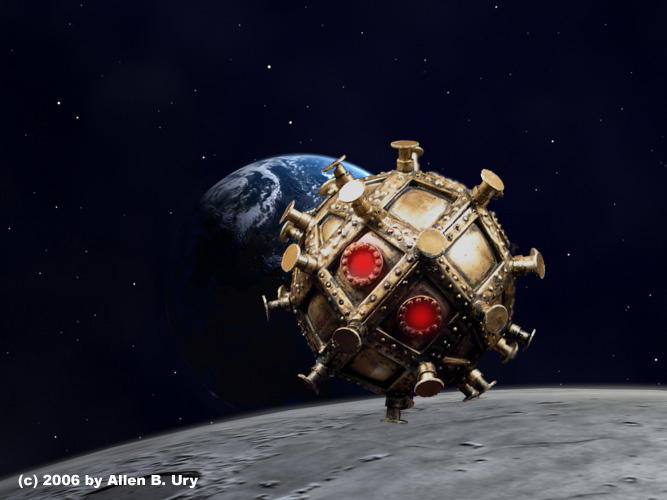The problem is not going to be electronics, it will be chemistry and metallurgy.
It's easy to build a mechanical computer, and anyone who's played Kerbal Space Program can tell you that you can get into orbit with just human reflexes alone.
The things that will be obstacles to your steampunk astronauts will be life support and making materials capable of handling the aerodynamic stresses involved.
The main thing you need to build a rocket is reaction mass and heat. You heat up the reaction mass and throw it out the back. The hotter it is, the more pressure, and the faster it goes out the back. Water is an OK reaction mass, steam is better, but still woefully low ISP, but supercritical steam can be an excellent reaction mass.
A supercritical fluid is one under such enormous pressure and of such high temperature, that it becomes nearly impossible to tell the liquid and gaseous phases apart. Supercritical steam has the interesting property that it is denser than liquid water, yet is still compressible. It is also under incredible pressure and heat (22 MPa at 600C), which gives it a lot of energy.
The problem then becomes not only how to generate the pressures and heat needed, but to make a material strong enough to confine the supercritical steam. 22 MPa is about 3200 psi, which is a chamber pressure higher than any rocket humans have built to date with the exception of SpaceX's raptor at 4300 psi (designed, not achieved). Needless to say, this kind of pressure would be difficult to do with 1800s technology in a way that keeps your thrust to weight ratio.
Another issue is going to be your energy source. You will likely not be able to generate the heat needed with coal alone, mostly because of the amount of oxygen you would need. Most real world designs for supercritical steam rockets require nuclear, which I would assume is not possible in your world.
This is where your magic would have to come in: first in creating some sort of "unobtanium magic alloy" capable of handling the stresses involved, and second in generating the heat required, perhaps using some magic "dwarven forge," "dragonfire," or "phoenix eggshells," just anything capable of making intense heat.
The next problem is going to be life support. You need a way to generate oxygen, but more importantly, to remove carbon dioxide. This is usually accomplished with very pure lithium hydroxide, which reacts with CO2 and pulls it out of the air. The chemistry required to produce this may be on the edge of what 1800s technology can do. You may need to invoke magic again.
But once you've sorted out these issues, your astronauts don't need any specialized electronics to fly in space. They can use a simple sextant as sailors have done for eons to find their position in space, or basic gyros can act as an inertial measurement unit. Simple mechanically based devices can measure orientation of the space craft, provide altitude measurements, etc... Slide rules can be used for any really difficult calculations.


